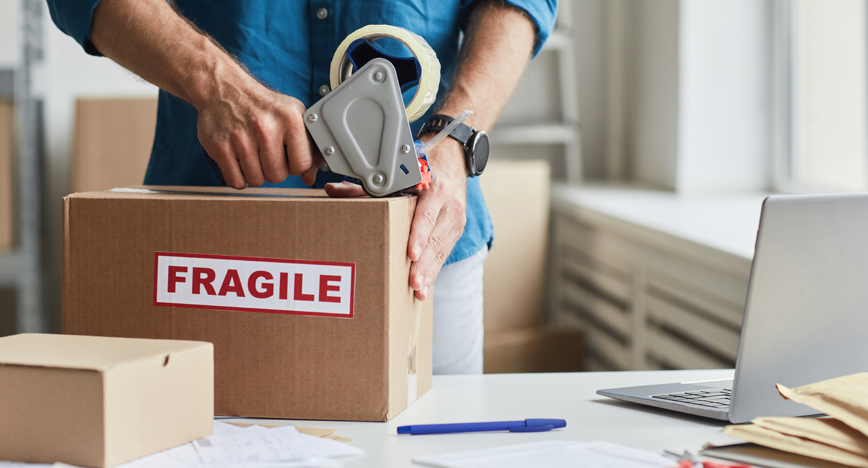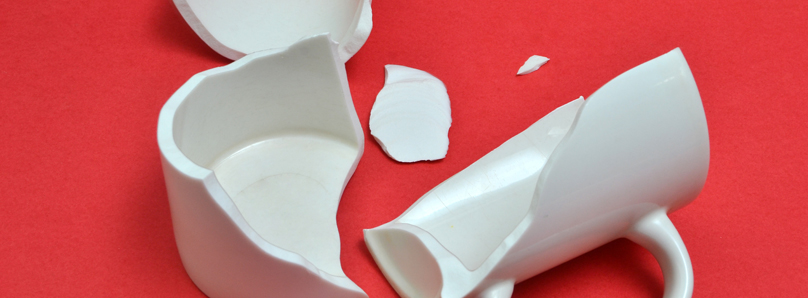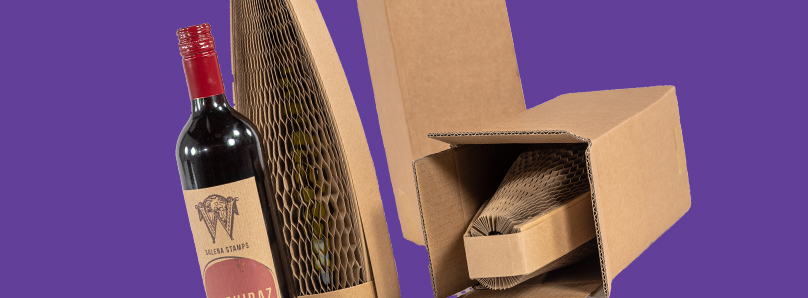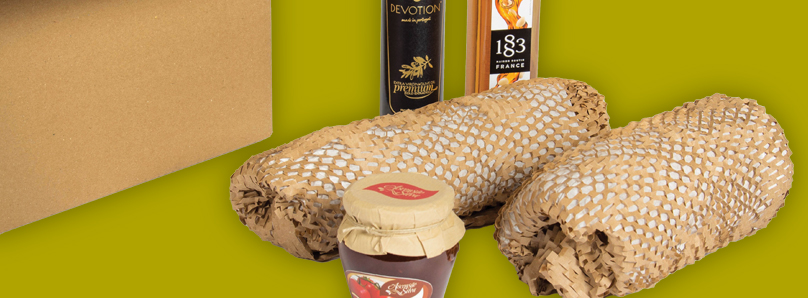The essentials of protective packaging for small businesses

Ever ordered something online and it arrived damaged? Well, you’re not alone. The IMRG report that 0.3% of home deliveries are damaged or lost in transit. Plus, 9% of participants in our 2021 unboxing research reported their parcels were damaged too.
Damage can be super frustrating, and they can create a negative first impression. This is where protective packaging comes in…
Protective packaging is crucial when you’re shipping any product through the post. You might be thinking, ‘well I use tissue paper’, which is great for some products, but you may need to safeguard fragile products with extra cushioning and not just void fill. Getting your protective packaging right can have a big impact on your customer experience and your costs.
So, in this month’s Packaging 101 blog, we will be exploring how you can protect your products and explain everything a small business (or a large one) needs to know about protective packaging…

Why should you use protective packaging?
There are lots of reasons you should choose protective packaging. Your packaging materials can have a huge influence on your costs, reputation and even repeat sales.
So, what are the reasons?
Packaging’s most basic function is protection –you want your goods to arrive with customers intact. Our last unboxing survey discovered that 9% of goods arrived damaged, which was up from 5% in 2020. And when you think that 4 billion parcels were delivered in the previous year, that is quite a lot of packages!
Let’s consider the impact damages and returns can have on your business. Every time goods in a parcel arrive damaged:
- The customer feels frustrated. They will have the hassle of making a complaint and returning the broken goods
- Your reputation is harmed. The customer may not want to buy from you again
- Costs go up. You’re paying for reverse logistics, replacement product and additional handing
- The environment loses too. Returning a damaged product doubles the carbon cost of the transaction (it triples it if you have to post out a replacement)
However, if you get your protective packaging right, it can have a huge positive impact. Firstly, you’ll reduce operating costs, secondly, you’ll minimise handing, and thirdly, you’ll lower your impact on the environment. And, as a final benefit, you can also enhance your customer experience. This is very important: from YouTube to TikTok, unboxing videos are loved on social media. The more impressive your packaging, the more likely people are to talk about it.
Don’t underestimate this style of marketing either, as 92% of consumers believe suggestions from friends and family more than advertising. Why wouldn’t you want them to have that positive customer experience? It could lead to more sales!

What to consider when it comes to protective packaging?
Protective packaging is all about balance. Of course, you need to use sufficient packaging material to protect your product during shipping. On the other hand, too much can be seen as wasteful.
How much protective packaging you use will depends on your products and how you’re shipping them. You need to consider weight, size, and fragility. You should also consider if you’re shipping it as a single item or as in a muti-pick pack. Could items go together during transit?
If your product is fragile, you might want to use as much packaging as possible. But there may already be existing solutions that will protect your product without using excess protective packaging material. For example, if you sell drinks or glassware like bottles, there are expertly designed options for that industry.
What else should you think about? Well, introducing packing guidelines is a good idea too. Guidelines can help you reduce your packaging waste and protect quality standards as you pick, pack and dispatch products.
Longer term, as your business scales up and productivity becomes a challenge, you can explore protective packaging automation. Using automated packaging systems allows you to control how much protective packaging you use, ridding you of the manual guesswork.

Protective packaging examples
Protective packaging is all about balance. Of course, you need to use sufficient packaging material to protect your product during shipping. On the other hand, too much can be seen as wasteful.
How much protective packaging you use will depends on your products and how you’re shipping them. You need to consider weight, size, and fragility. You should also consider if you’re shipping it as a single item or as in a muti-pick pack. Could items go together during transit?
If your product is fragile, you might want to use as much packaging as possible. But there may already be existing solutions that will protect your product without using excess protective packaging material. For example, if you sell drinks or glassware like bottles, there are expertly designed options for that industry.
What else should you think about? Well, introducing packing guidelines is a good idea too. Guidelines can help you reduce your packaging waste and protect quality standards as you pick, pack and dispatch products.
Longer term, as your business scales up and productivity becomes a challenge, you can explore protective packaging automation. Using automated packaging systems allows you to control how much protective packaging you use, ridding you of the manual guesswork.
Protective packaging examples
As we mentioned, being mindful of the protective packaging you choose is important, so we’ve included some examples of protective packaging to get you started…
- Air Pillows – there are lots of great options if air cushions are your protective packaging of choice! A great system is the Pacplan® airwave pillow system machine, it retails for less than £650 and creates efficient, on-demand air pillow void fill from compact roll film – it is money well spent. In fact, 1 roll of Pacplan® air pillow film is equivalent to 6 x 15m3 bags of loosefill – perfect for larger or growing operations!
- Paper Cushioning – if paper is your protective packaging of choice, there are lots of options available. Geami WrapPak® is an innovative eco-friendly paper cushioning system designed for shipping fragile items with peace of mind. It combines expandable die-cut honeycomb paper with a tissue liner. Kerbside recyclable, it provides great protection and an attractive pack appearance. One example is the WrapPak Ex Mini, it’s a retail ready solution that doesn’t require electricity or outlay for machinery, so it’s a good starter choice for small businesses.
- Bio loosefill packing chips – this eco-friendly, pourable loosefill is 100% compostable and perfect for filling voids, especially awkward spaces around packed items. This makes it ideal for putting multiple picks into one box, or packing products that vary in sizes. We recommend this product for less fragile items, as sometimes movement in pack can occur during transit.
- Flexi-Hex® Bottle Packaging – Flexi-Hex® is a plastic-free, recyclable concertina style protective packaging It’s ideal for bottle protection and an excellent alternative to polystyrene bottle packaging! It offers a high level of protection, equal to plastic alternatives.
We haven’t listed all kinds of protective packaging available here, but you can take a look at our wide range by clicking here!
If you want to learn more about packaging, we have covered lots of other great topics in our Packaging 101 series!
We work with small businesses every day to help them with their packaging so if you want a tailored expert packaging recommendations or advice, get in touch with Macfarlane Packaging today!

